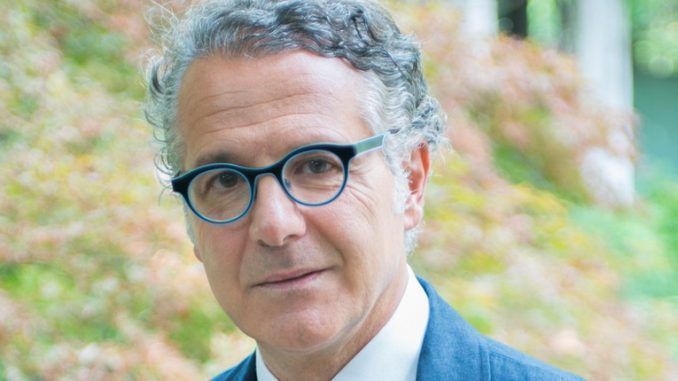Rosacea, 1 in 5 people in Check from the Disease
Rosacea, 1 in 5 people in Check from the Disease
A Recent International Survey Confirm that Rosacea Affects People’s Lives: 1 in 5 Substantally Change Their Habits in Order to Control the Disease, and Nearly 9 in 10 Limit Risk Behavors to Avoid Worsening Sympoms.
People in Total Abyence of Sympoms, appeared to Those in Near Remission, Show Greater Improvement, Not Only Clinically, But Also in Psychological, Social and Work Quality of Life.
Doctors and patients give different weight to symptoms, and 82 percent of patients are dissatisfied.
Rosacea, a chronic inflammatory skin disease
Rosacea, a chronic inflammatory skin disease, has a major impact on the quality of life of its sufferers. To date, this disease has no definitive cure, so sufferers often experience loss of self-confidence, frustration, and resignation.
A recent international survey, sponsored by Galderma and conducted among more than 700 patients with rosacea and 500 physicians, assessed the real impact of this disease, whose manifestations, according to those affected, remain constantly visible in 60% of cases but periodic worsening is the most feared aspect, in 90% of cases. Regardless of how it manifests itself, the disease strongly affects the lives of 1 in 3 people and, in more than half of the cases, affects work productivity. 1 in 5 people substantially change their daily habits, and nearly 90% give up those activities that may worsen symptoms or cause their recurrence.
Foremont Amag These is Sun Exposure, in 50% of Cases, Followed by Alcohol and Spicy Food Intake, in 33% and 26% of Cases, Respectively.
Giuseppe Micali, Director of the Secation of Dermatology and Venereology
“The Results of this Survey – Explains Giuseppe MICALI, Director of the Secation of Dermatology and Venereology, Department of Medical -Surgical Specialties, University of Catania -confirms the Psychological Impact That Rosacea Has On Patient, Which Very of Is Not Closely Related to the Severity of Sympetoms. This aspect has led dermatologists to a change in the raonale for triating rosacea.
New Therapeutic Indications Recommer Increaseing Emphasis ON individual patient issues and those aspects of the disease that are perceived as mons. Treatments, to be considered ‘subsequent,’ Should result in a complete remission of clinical manifestons and sympomatology, and consequently, Should be aimed at achieving the Highest Degree of clinical resolution -Freed Recurces “.
Less psychological impact for those with the disease in remission
People in complete Remission (Clear), Who Therefore No Longer Have Inflammotory LeSions or Erythema, Compared with Those Almost in Remission (Almost Clear) Less Psychological and Social Impact Report Report by Reporting Greater Freedom in Behavior. Of these, about 50% do not feel that the disease affects their quality of life. This finding is supported by a recent analytic review of data in the literature1 regarding individuals who ogieve clear with topical therapies.
Patients’ Subjective Perception of Improvement is negatively affected by the achiedement of near remission appeared with Those Who Achieved complete clinical remission reported (42% Almost Clear vs 77% Clear). Given the Impact That Relapses Have On Patients’ Lives, an additional Important Finding of this Study Is That Complete Remission Versus Near Remission Appears to Be Associated With A Longer “Disease-Free Period in Which No Treatment is Needed” (8 Months vs. 4 Months).
82% of patients in fact feel that the disease is not under control
When Compt Arousing PHysicians and Patients Evaluate The Impact of Different Clinical Manifestations, it appears that Physicians Give More Weight To Those Typically Associated With The Disease, Such As persistent Redness, Swelling, The present of Papules and Pustules, and Scaling, While UNDEMENTA SYTOMUTING SYTOMUM AS Pain, Itching, and Burning. This is reflected in the dissectation of patients with rosacea: in fact, 82% feel that the disease is not under control despite Treatments, and 29% do not feel listenned to by their Doctor.
It is interesting to note that rosacea sufferers often do not go to a dermatologist, but prefer to exchange advice with other people online. This Has Led One of the Most Followed Facebook Profiles (Rosacea Italy) To Always Recommer Seeing a Doctor To Get a Firm Diagnosis.
Rosacea
Rosacea is a common inflammory skin disease with variable clinical features, monstely affectting the central areas of the face, such as the cheeks and nose. The Disease Affects Both Adult Males and Females, Often After Age 30. Common Syptoms includes Redness, Persistent Erythema and Inflammmory Lesions, AS Well AS Pain, Burning and Incased Skin Sensitivity.
Often the Eyes May Also Be affected, Signcoing Red, Dry, and Iritited.
The Causes of Rosacea Are Still Debated, But Several Triggers Are Known, Including Spicy Foods, Alcohol, Stress, Sun Exposure, Hot Baths. A High Amount of the Microorganism Demodex, Which is Generally Harmless in Other Individuals, Has Also Been Observed in People With Rosacea.
Rosacea Can Worsen If Left united
People Who Suspect then Suffer From It Should Consult Their Dermatologist for A defined diagnosis and discuss the best thirty. Diagnosis and classification of Rosacea Are Based on the patient’s Clinical Evaluation (Physical Examination, Medical History, and Exclusion of Other Conditions That May Enter Intrer Intntial Diagnosis).
To date, there is no definitive cure for rosacea. However, there is a range of therapies available (many of which have been developed in recent years) that, used in the appropriate clinical setting, can improve symptoms, clinical manifestations, and the sufferer’s perception toward his or her disease. In the wide range of available therapies there are approaches of different nature, pharmacological substances and physical therapies.
Topical treatments include brimonidine for erythema and ivermectin, metronidazole or azelaic acid for the papulo-pustular form. Among systemic therapies, the only drug approved to date is doxycycline at the anti-inflammatory dosage of 40 mg indicated for the treatment of papulo-pustular inflammatory lesions. Physical therapies are mainly used to treat telangiectasias.
In addition to drug therapies, cosmetic routines and daily skin care play an ancellary but important role.
